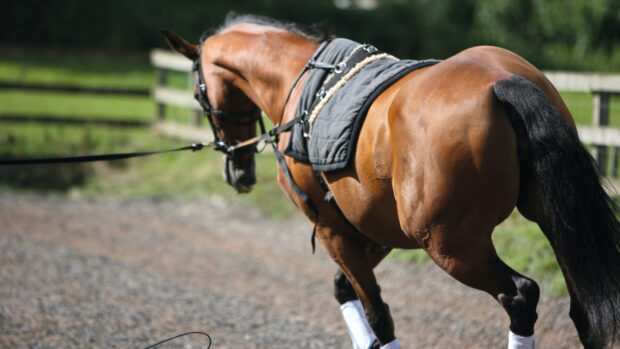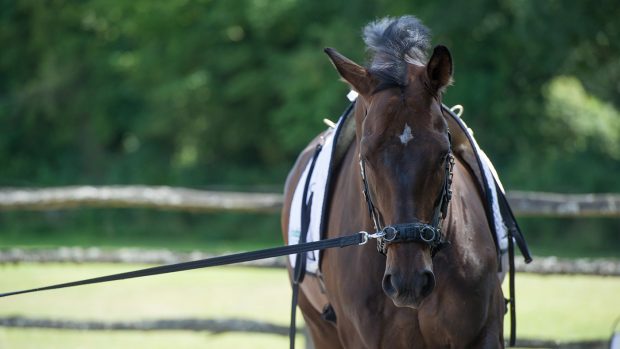Q: I’ve just bought a new horse who throws his head in the air on the approach to a fence. Apparently his previous owner used a Market Harborough when she was jumping him. How does this schooling aid work and would I be able to use it in showjumping competitions?
Carolyn Henderson replies: As you are just starting your partnership with this horse, it would be a good idea to have some lessons with a good showjumping trainer.
He or she will be able to analyse your horse’s jumping technique and hopefully improve his approach to fences through specialised gridwork.
Make sure your horse is not in discomfort by having his teeth, back and tack checked.
A saddler I know says she has seen this sort of problem caused by saddles which have insufficient clearance over the withers and press down as the horse takes off.
In the short term, when control and safety are vital, a Market Harborough may help.
It should only be used with an ordinary snaffle – not one with any sort of lever or gag action – and not with a pelham or you will get conflicting actions.
The Market Harborough fastens to the girth, travels between the front legs and divides into two narrow straps, each with a small clip hook at the end. The straps pass through the bit rings, from the inside to the outside, then clip to reins which have small D-rings attached.
The advantage of the Market Harborough, which is permitted in jumping competitions as long as it is used with an ordinary snaffle, is it’s the horse not the rider that works it.
When the horse raises his head it applies rein pressure; when he lowers his head, the pressure is relieved.
Fit it loosely to start with, so the horse gets used to the action. Always make sure it is loose enough so the direct, ordinary rein comes into action before the Market Harborough.



